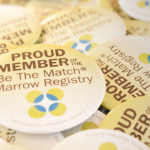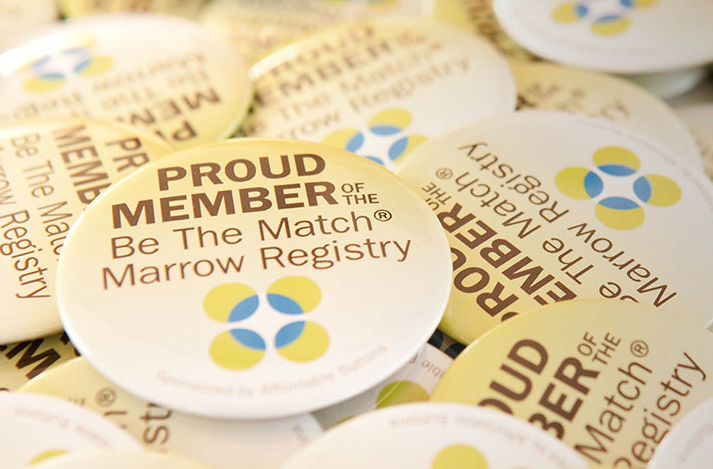By: Mike Isaacs | misaacs@pioneerlocal.com | @SKReview_Mike
SKOKIE — Shalom Klein’s on again-off again journey to help save a stranger’s life suddenly became on again.
The 25-year-old Skokie resident reported in the early morning Oct. 14 to Advocate Lutheran General Hospital in Park Ridge, where he spent his full day hooked up to a machine donating bone marrow.
Only last month, this day seemed like it might never arrive — or at least not so soon.
After the procedure had already been postponed twice — presumably because of the recipient’s failing health — Klein received a message from the National Bone Registry Program.
The recipient’s kidneys were failing, Klein was told, and the date was called off again; moreover, it was uncertain whether he would recover and Klein’s cells would be needed at all.
“Needless to say, I am devastated,” he said at the time.
But if there is anything he has learned through his courageous adventure, it’s that conditions can change in a hurry. Klein never stopped reporting in for blood draws — mandatory preparation for a bone marrow procedure — and a new date was scheduled as quickly as the last one was cancelled.
“People need to get swabbed,” he said while in the hospital waiting room Monday where he would start his fifth day of injections to prepare his body for the procedure.
“Most people will never get called, but you need to make yourself available. It’s such an easy, easy step that you can take,” he said.
Klein took that step a year or so ago when he saw Temple Beth Israel in Skokie was sponsoring a drive in the name of a member who had died. He quickly had his cheek swabbed and then forgot about it.
Months later, he received a call telling him that he was the best and perhaps only match in the entire bank for a recipient fighting acute leukemia.
He never wavered in his decision to move forward, although he had to run it by his family first. From the start, Klein said, this was a chance to save a life, an opportunity few people are handed.
That opportunity did not come without some sacrifice. In addition to the many blood draws needed to be scheduled, Klein received injections last week that he was told would make him feel somewhat ill — but without permanent risk.
The night before Monday’s procedure, however, he visited the emergency room, which doctors say is rare. He felt nauseated and like his sternum was being squeezed.
Most of the time, doctors said, the injections will produce flu-like symptoms. More normal was that Klein felt aches and pains including a sore back, all of which subside during and in the days after the procedure.
But even with his unexpected call to the emergency room, Klein said he has no regrets whatsoever.
“I wouldn’t change one thing,” he said. In fact, he has made himself available to the hospital for anyone considering doing the same thing who wants to talk to him.
“I certainly would be honest about what I’ve gone through,” he said “But what is a little bit of pain relative to somebody’s life?”
Lutheran General
Advocate Lutheran General Hospital is one of only three medical institutions in the Chicago area that perform such a procedure. (Loyola University Medical Center and University of Chicago Medical Center are the others.) It performs 20 to 25 procedures a year.
A small and dedicated team monitor the donor closely from preparation to aftermath. Klein said from the start that it’s been comforting to know he’s in excellent hands.
Nurse Mary Hurd, the hospital’s transplant program supervisor, was the first who tended to Klein Monday morning. While giving him his final injections, she received an update on his condition.
Klein said the shots themselves are not painful, but he has felt ill from the aftermath.
“I called Dr. Klein last night,” he told her. “I was in excruciating pain.”
Dr. Leonard Klein (no relation to Shalom), the hospital’s transplant medical director, was immediately responsive. Klein received medicine during his emergency room visit and felt better — although hardly great — when he reported Monday morning.
“It’s such a benign process that the vast majority of patients hardly ever need medical attention,” Dr. Klein said. “Usually Tylenol or Advil or Aleve will take care of the pain.”
Dr. Klein said it’s sometimes difficult to find a match for a transplant, but the more donors in the registry, the better the chances. Once a match is found, it takes months to make sure the match is available and ready.
“There is special testing and blood work and (Shalom) can tell you how many tubes of blood were drawn,” he said. “By the time I see the patients to give their consent, they have gone through a lot of medical evaluation beforehand.”
The good news is that the time it takes to find a critical donor has been reduced from past years, Dr. Klein said.
“It could have been three, four, five months,” he said. “Now it can be anywhere from six weeks to eight to 10 weeks, and that makes a difference.”
Advocate Lutheran General Hospital has been performing these procedures since 1995 or so. The transplant program itself is 23 years old.
“The actual process hasn’t changed much at all,” Dr. Klein said. “What’s different about our unit is that we’re now able to get a quick evaluation of what the concentration of the stem cells in the blood stream are by doing testing and we can make good predictions.”
According to the National Bone Marrow Registry Program, about one in 540 registry members in the United States go on to donate bone marrow or peripheral blood stem cells to a patient.
“Because of the vast variation in tissue types, we can’t predict an individual registry member’s chance of donating to a patient,” the National Bone Marrow Registry Program states.
Those in the registry who match a patient are asked to donate either bone marrow or cells from circulating blood (known as PBSC donation). Donating bone marrow is a surgical procedure done under general or regional anesthesia in a hospital. While a donor receives anesthesia, doctors use needles to withdraw liquid marrow from the back of the pelvic bone.
PBSC donation, which was Klein’s procedure, is non-surgical and done in an outpatient clinic. The injections of filgrastim Klein received increased the number of blood-forming cells in his bloodstream. The cells are rushed to the recipient who has been prepared to receive them.
“By the time (Shalom) is getting the injections,” Dr. Klein said, “the recipient has already gone through a round of usually heavy doses of chemotherapy. So if (Shalom) doesn’t show up here on time, and there’s a delay or he decides not to do it, which has never happened, the patient could be in trouble.”
Little is known by the donor about the patient because of privacy. In this case, Klein was told the recipient is male and age 69, but where the cells will be delivered remains a mystery. In a year, if the recipient is doing well and both parties agree, they can meet for the first time.
“They purposefully do not even give me much information except what I need to know,” Dr. Klein said.
The success rate of “engrafment” — the process of transplanting cells so they produce new cells — is at least 90 percent, Dr. Klein said. “Usually within 14 days or so with this type of a transplant, (Shalom’s) cells will start to mature and grow in the recipient.”
This doesn’t ensure that the patient will thrive, however, because the patient still has to overcome his or her disease.
The success of the transplant comes down to Shalom’s transplanted immune cells recognizing the leukemic cells as being foreign and killing them off.
“Depending on the type of disease we’re transplanting, that determines the success rate,” Dr. Klein said.
Where a patient may have a 5 or 10 percent chance of surviving without a transplant, Dr. Klein said, his chances may be somewhere between 50 to 75 percent with it.





